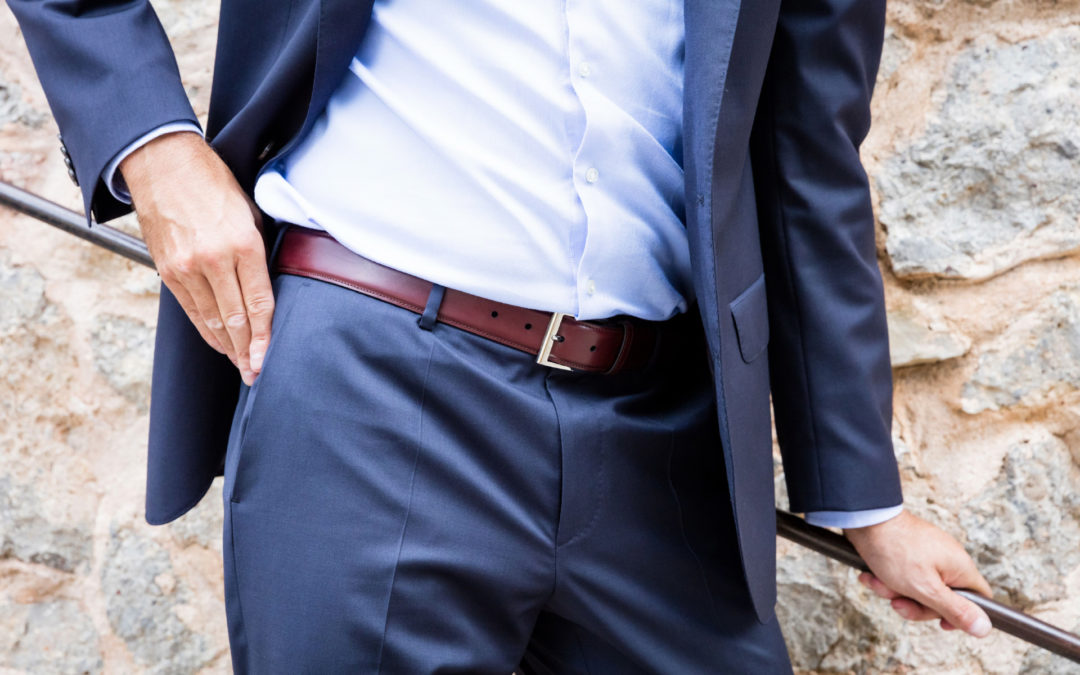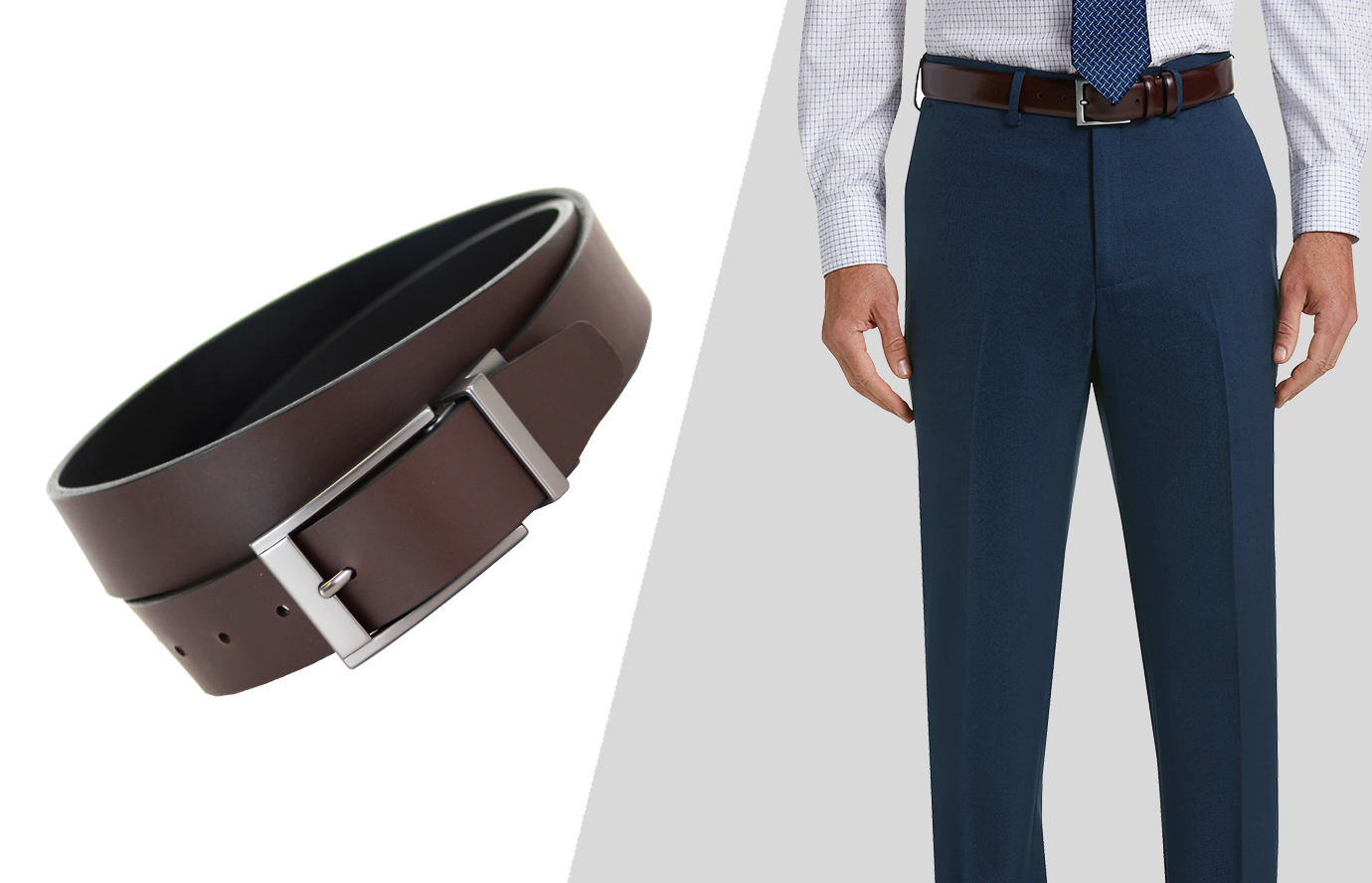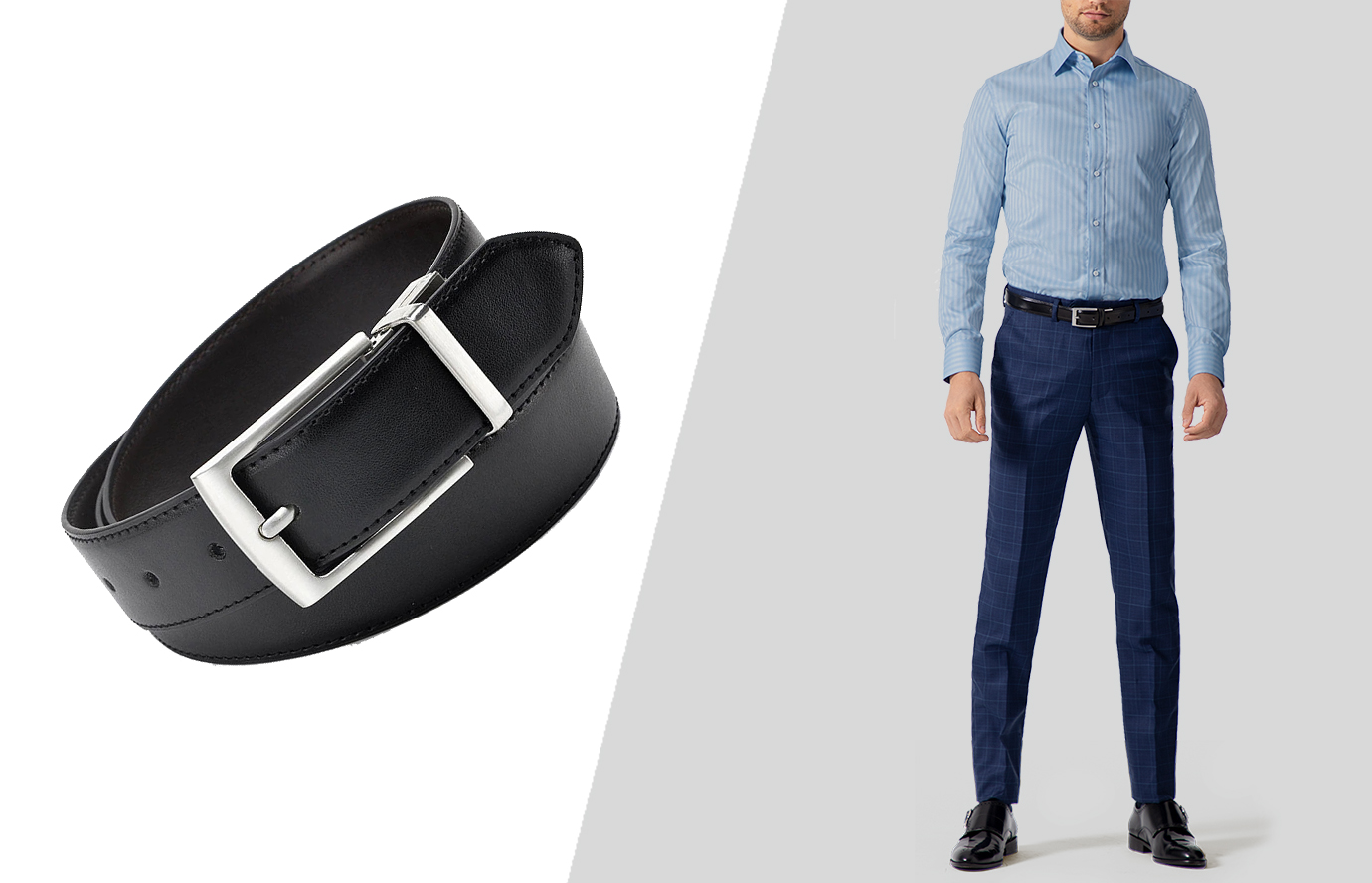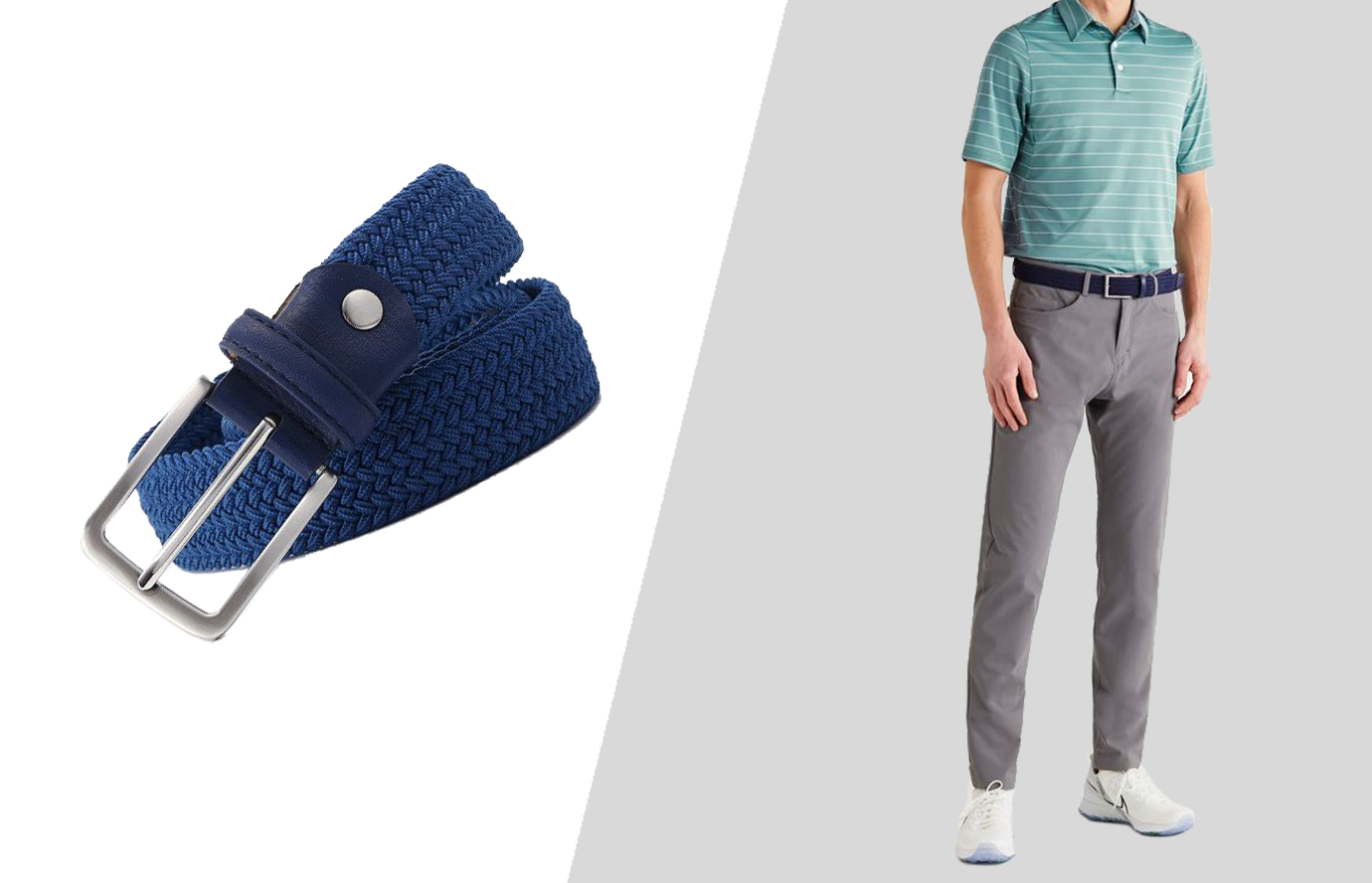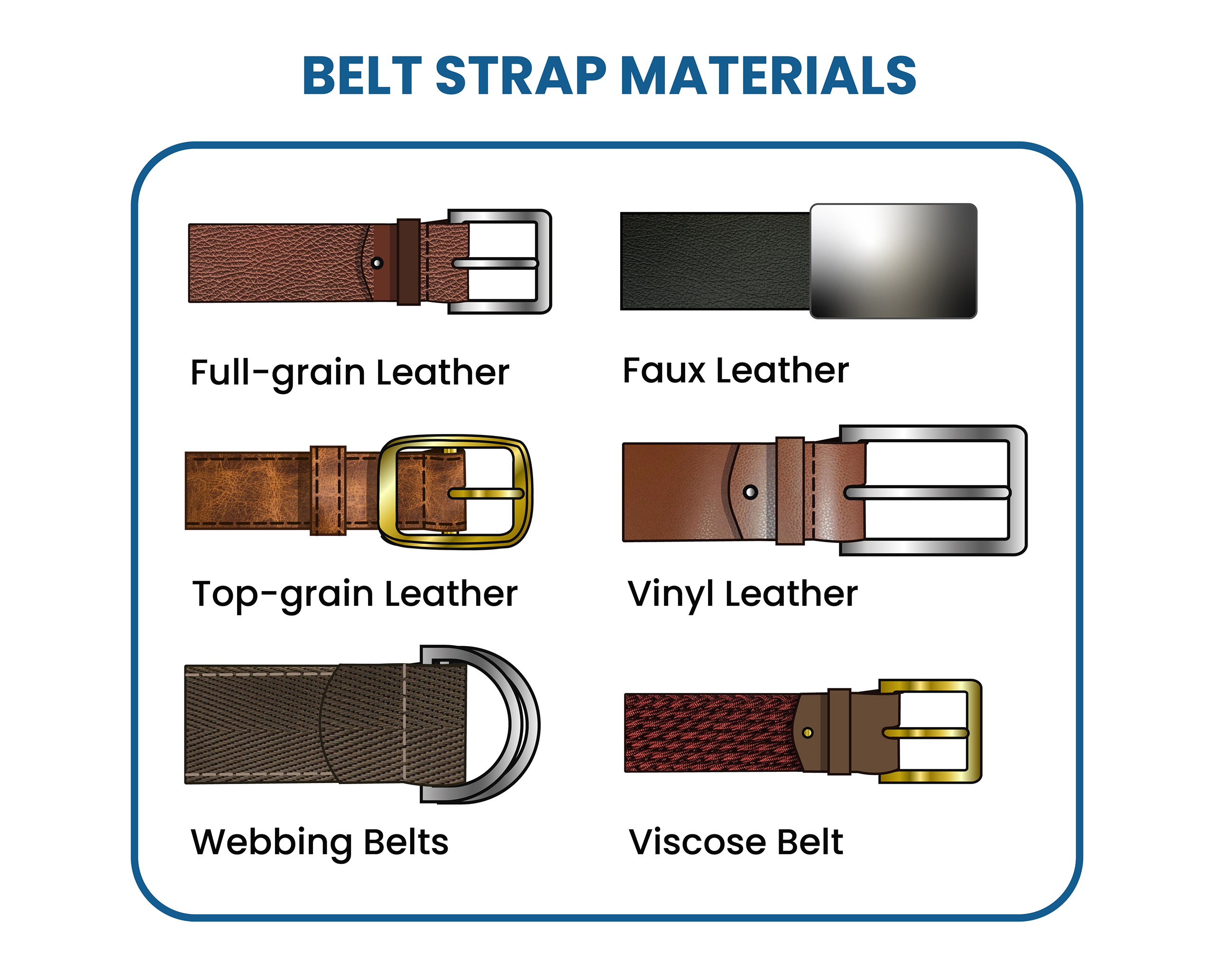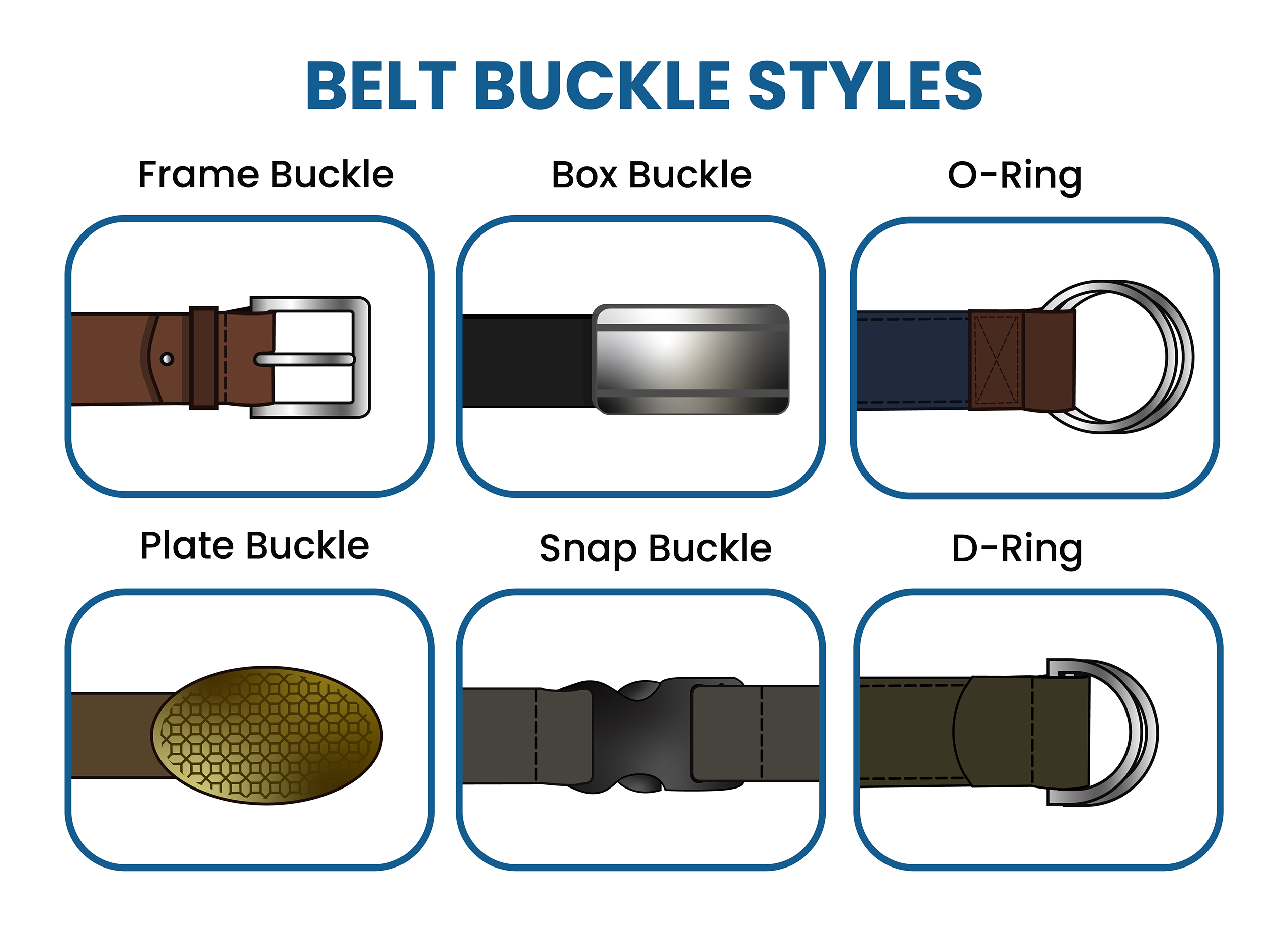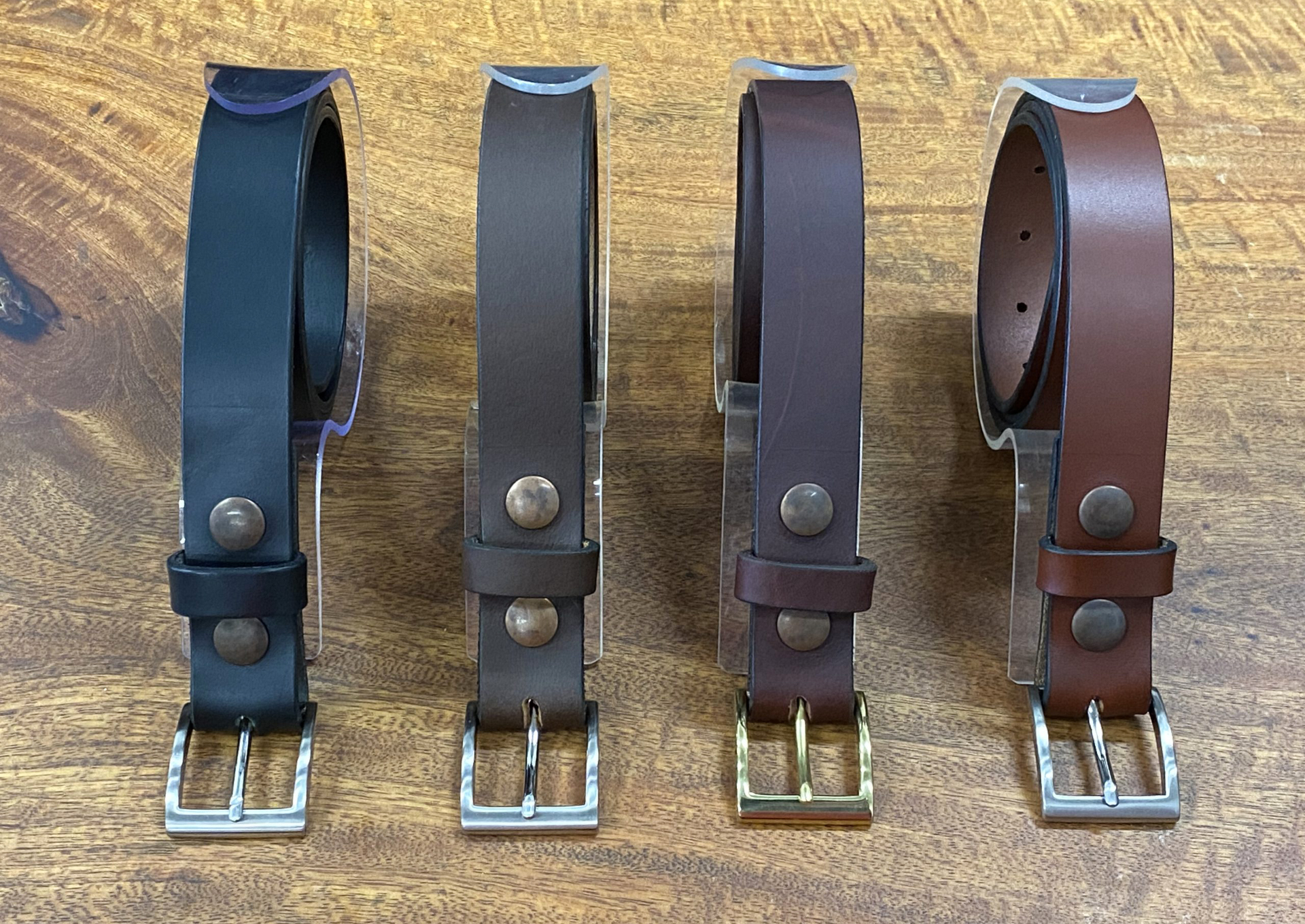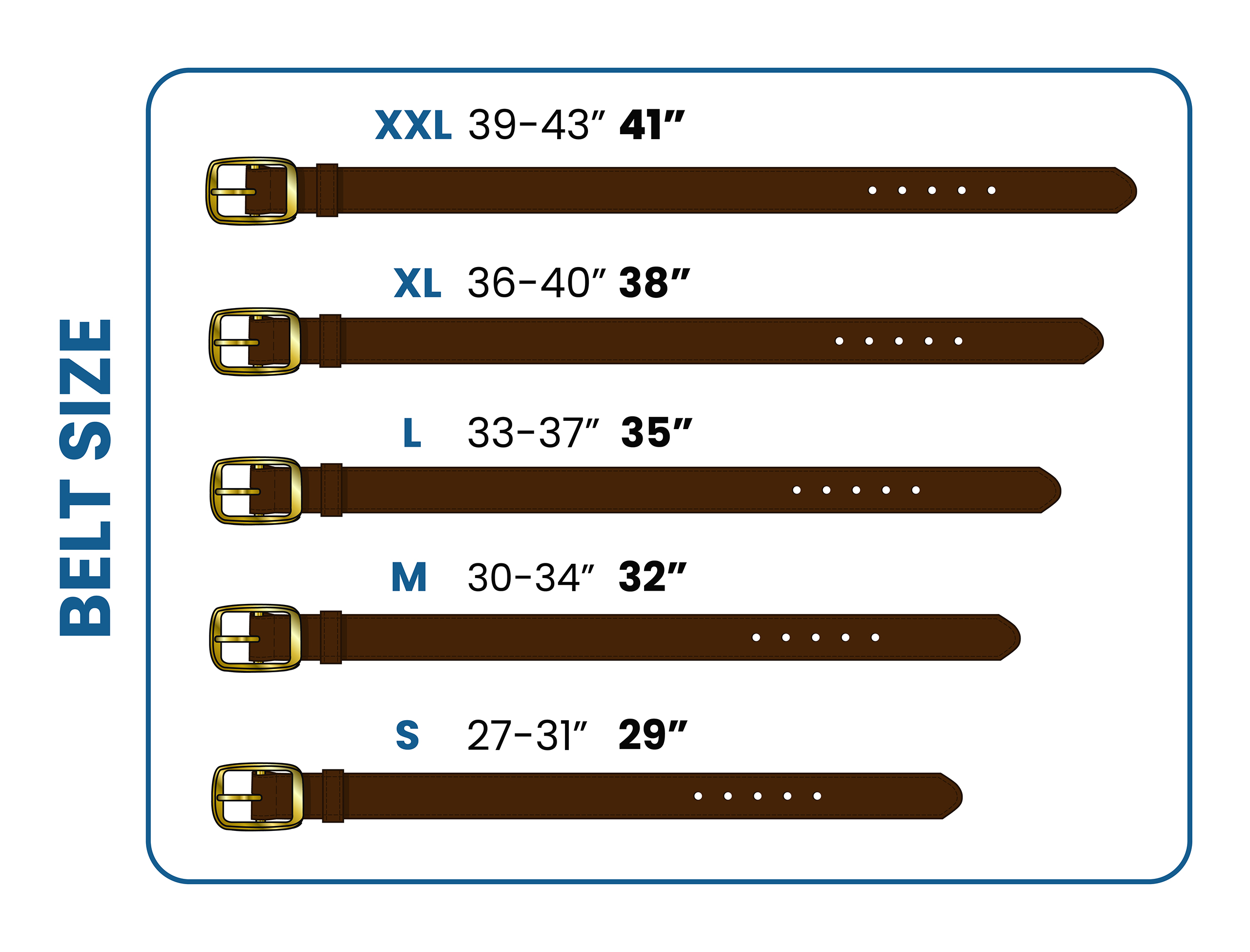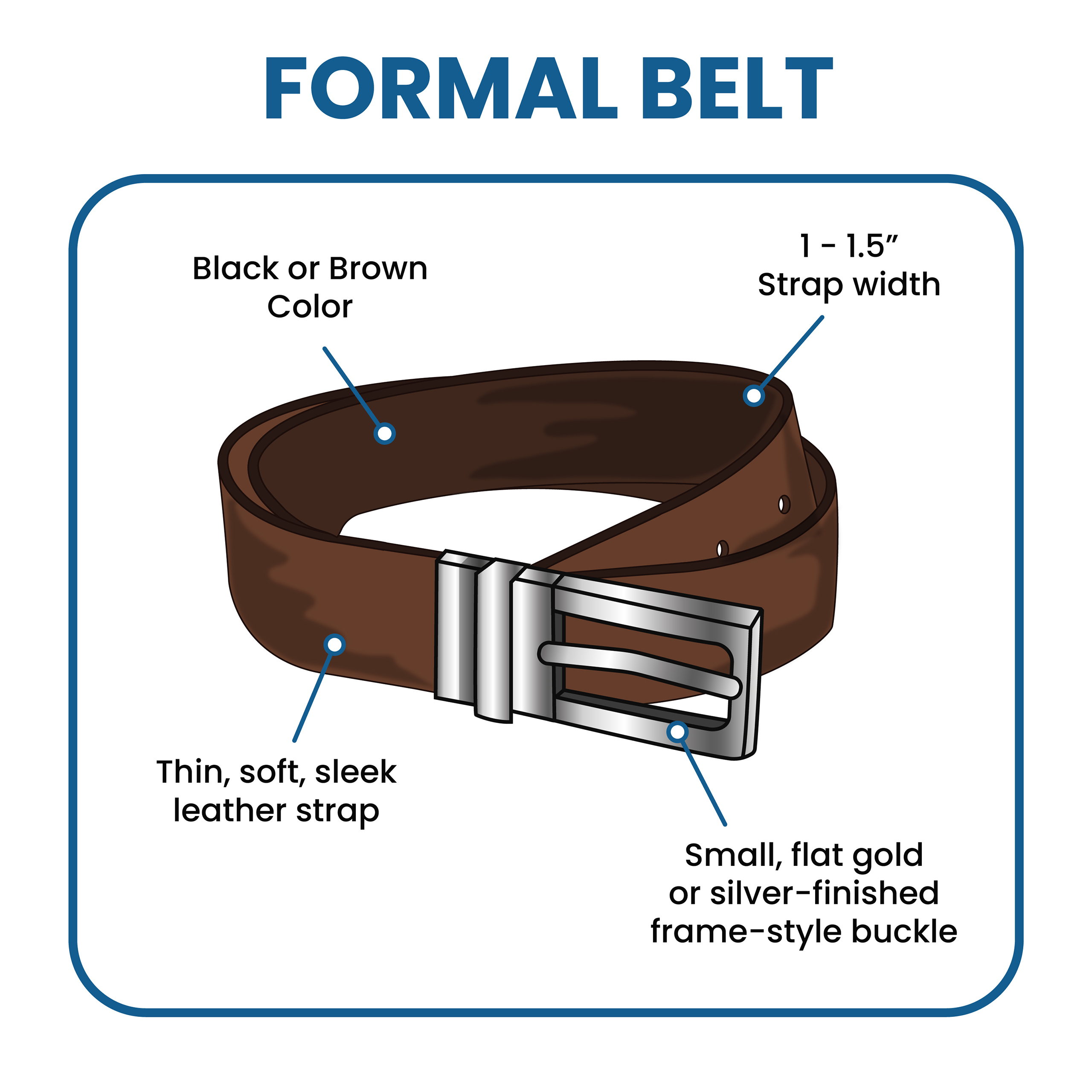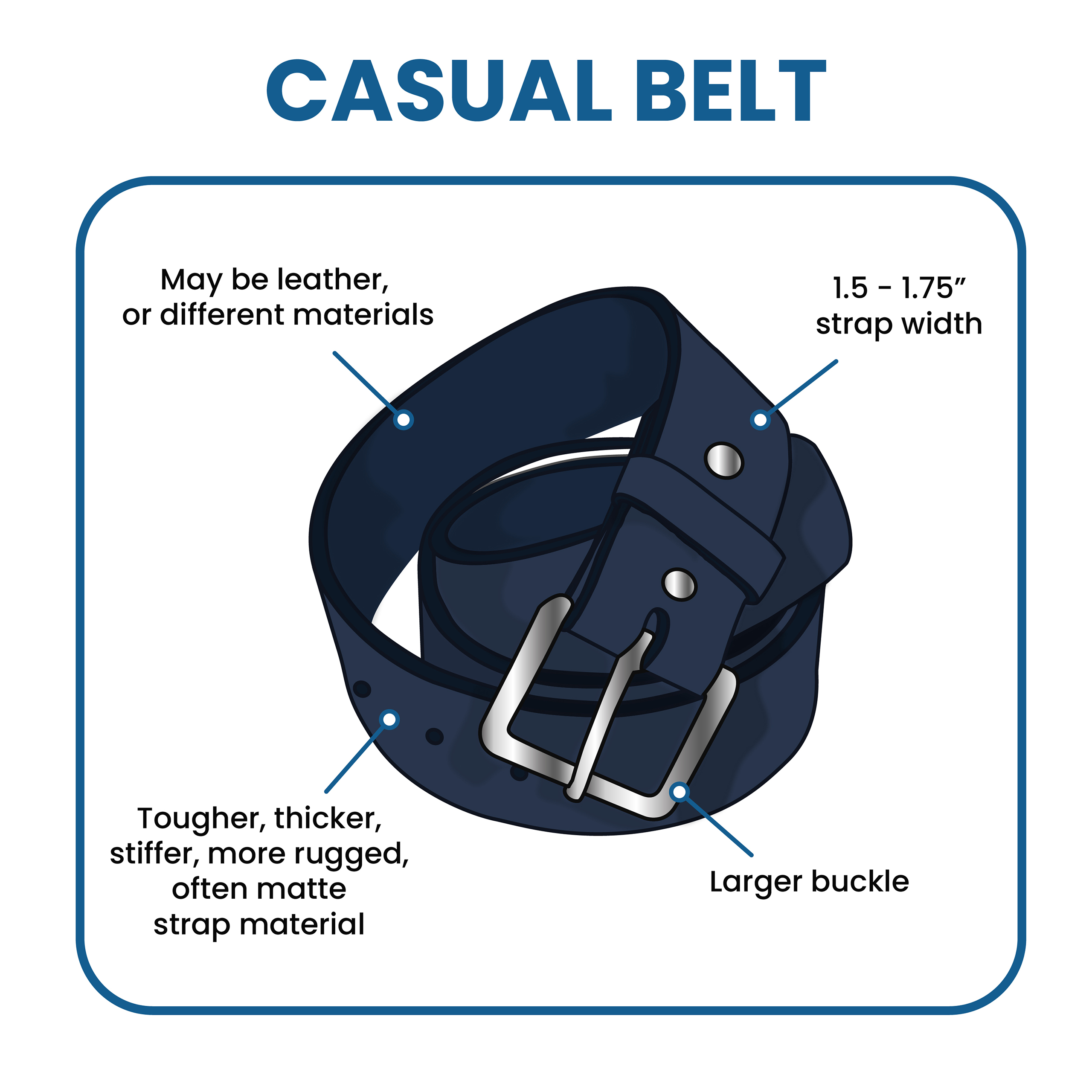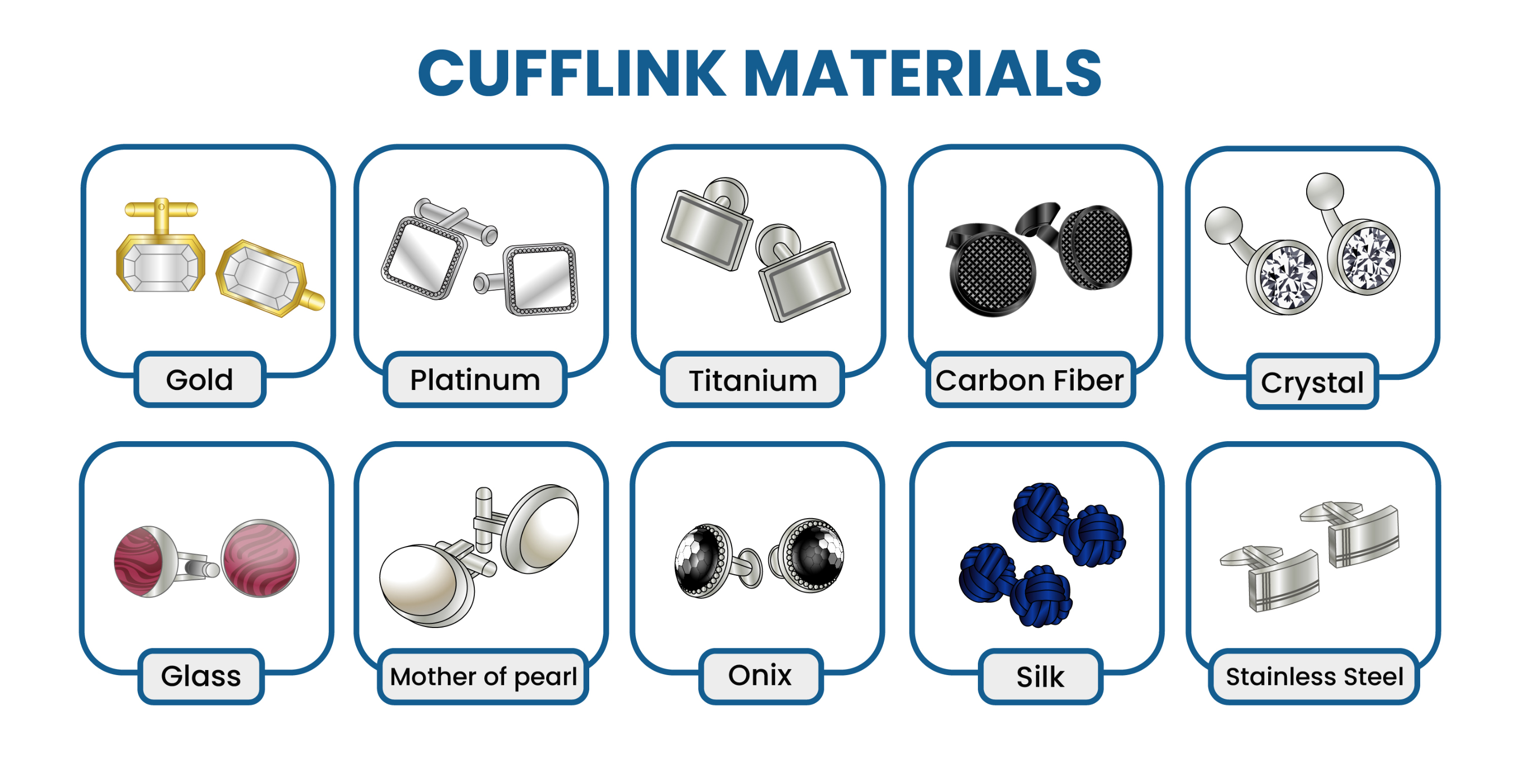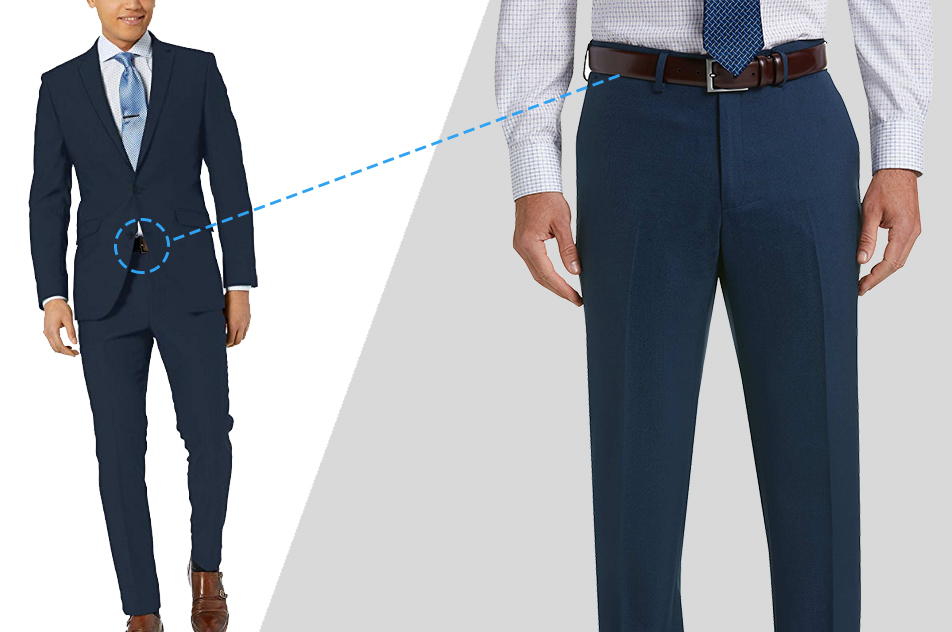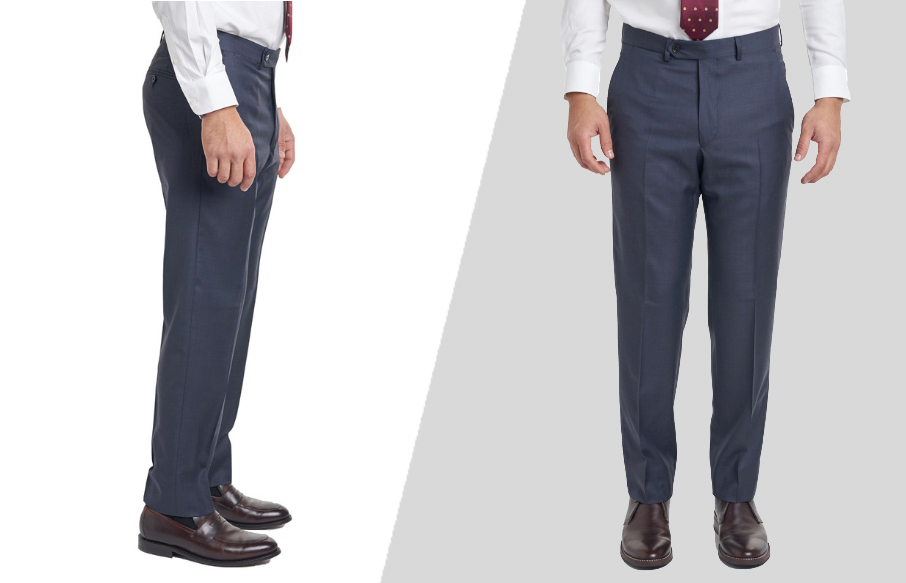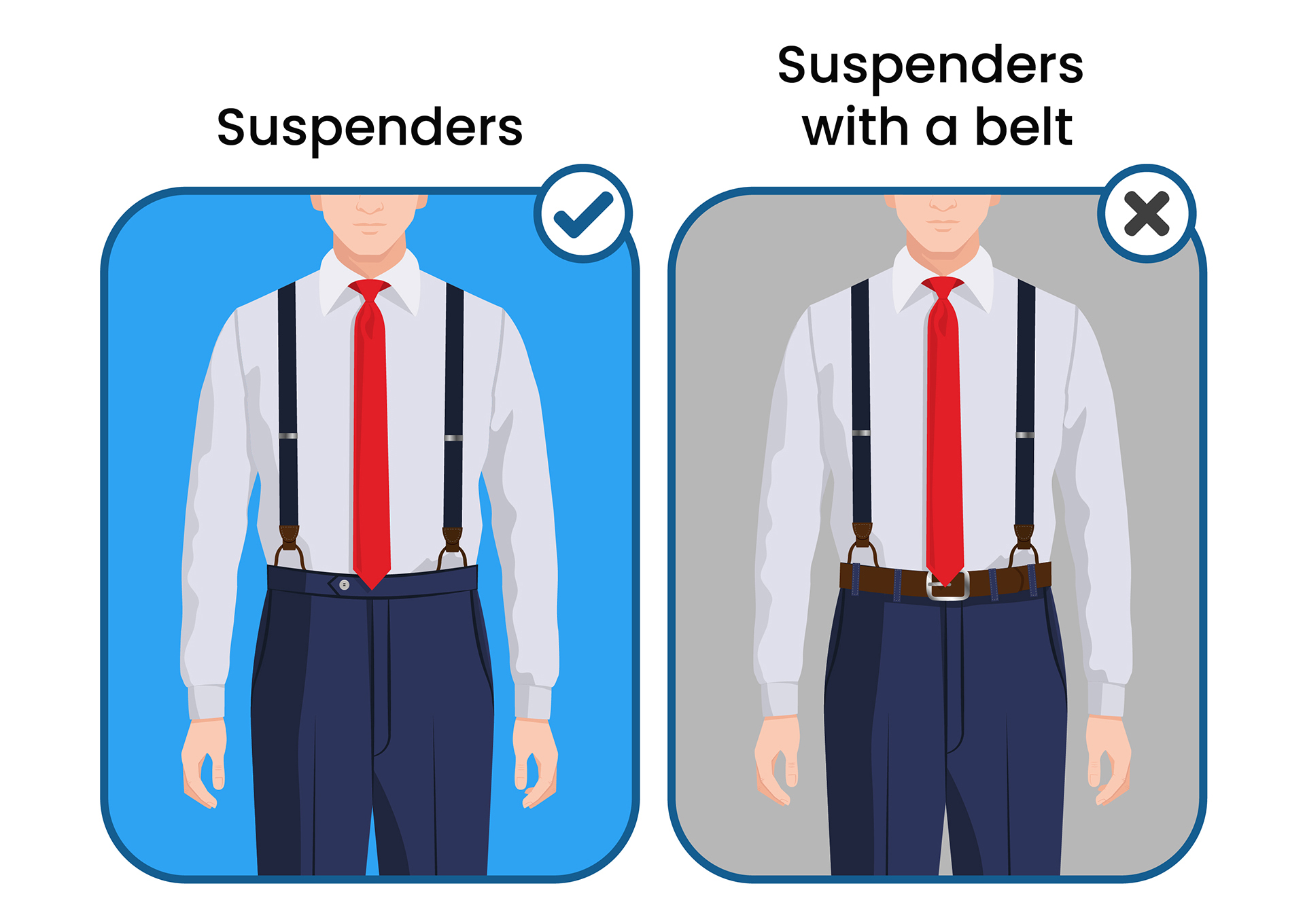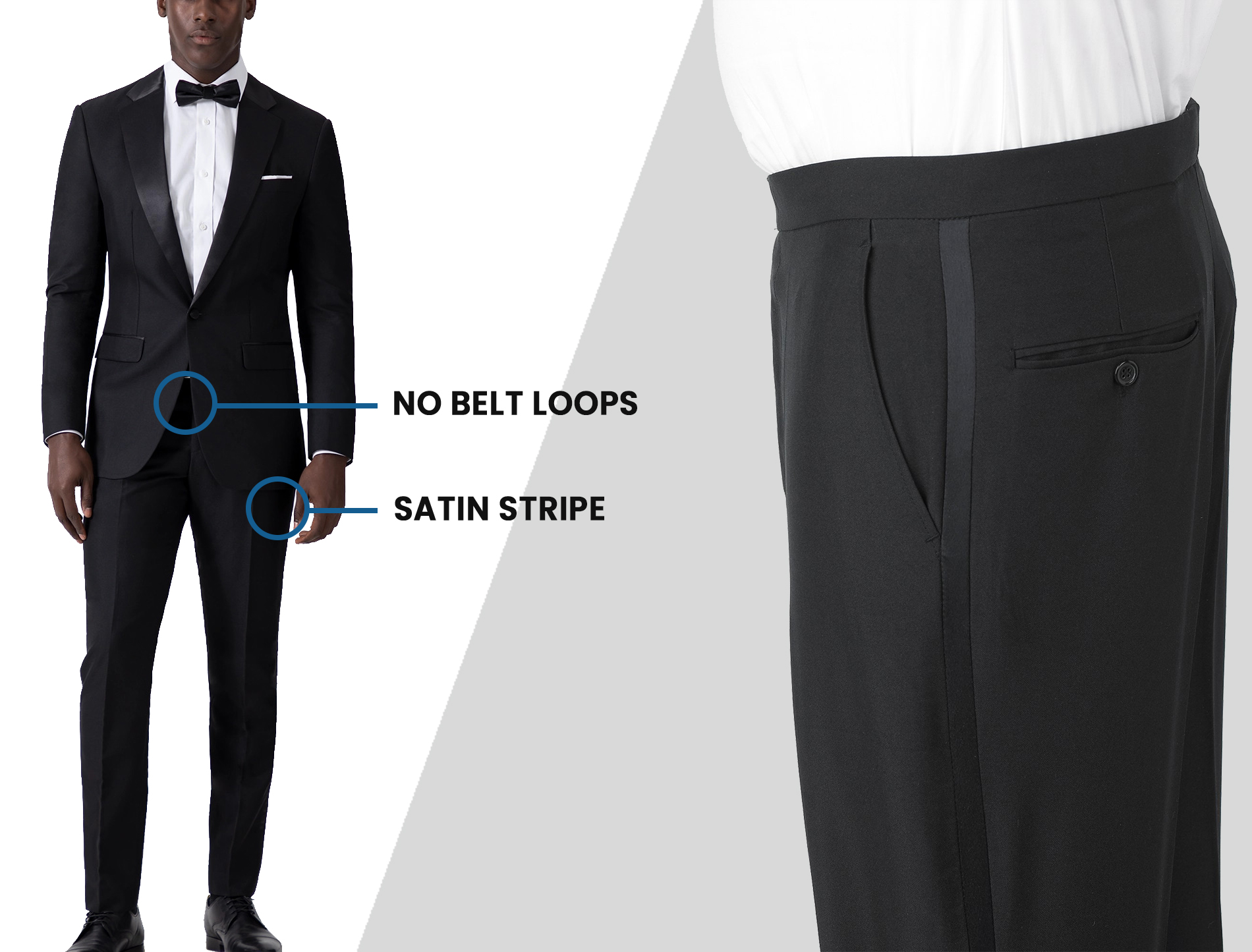You have to wear the right belt if you were to adhere to specific dress codes.
But if you’ve ever visited the belt section in a department store, you know how overwhelming your choices can be. So much leather, so many different buckles!
It’s understandable if you just want to throw your hands up in the air and give up.
Once you learn the basics of belt wearing, and when each style is called for, you’ll have a much easier time when belt shopping. You may even grow to enjoy it!
Types of Belts for Men
There are scores of fashion choices for men, with a multitude of style choices. And there are just as many types of belts as there are styles.
All kinds of fashion include belts; some are optional, others not so much.
With such a wide range of belt styles, how can one know where to begin? It’s a lot less overwhelming if you start by first breaking down the outfit you are accessorizing.
Then, you can quickly narrow down your belt choices by taking a close look at your clothing; your outfit can be an excellent guide for knowing which belt you need.
Ultimately, however, you can begin by breaking down your ensemble into two categories: formal and casual. You’ll go far in deciding upon a belt just by knowing if you are dressing formally or casually.
Formal Dress Belt
A formal dress belt is relatively distinct. The most identifying feature of a dress belt is the material; dress belts are always leather.
In addition, you can expect a dress belt to have a metallic frame buckle. Keep the frame buckle size small. You don’t want the belt to be very noticeable.
The thinner your belt is, the more formal it is. On average, a dress belt measures anywhere between 1¼ – 1¾ inches wide.
Dress belts are usually black or brown, and it depends mainly on the color that fits better with your suit. However, your shoes usually have to be the same color as your belt.
Casual Belt
Belts for casual outfits have a lot fewer rules. They can be made of practically any material, though leather is still acceptable. In fact, leather is generally preferred.
It can be thin and wide; the wider it is, the more casual it will be. There is a considerable variety of buckle options, as well.
Casual belts are more likely to be seen than dress belts are. This is because they are often displayed as novelty pieces.
How to Pick and Wear the Right Belt for Men
For such a seemingly small part of your outfit, there are many different factors to consider. You can begin narrowing down your belt choices based on what you’ll be wearing.
Your first question to yourself should be whether you are wearing a suit as opposed to casual wear. From there, you can determine many different features of the ideal belt for what you are wearing.
The Strap Material
In nearly any outfit, leather is always your best choice. It’s very elegant looking and adds a level of sophistication to any clothing.
But there are many other, more casual belt material choices. In addition, you could play with textures such as suede, canvass, or webbing.
If you are wearing a leather belt, be sure that it matches your shoes. The color match is crucial and one of the first rules of fashion.
However, it isn’t just the color of the leather that needs to match. The type of leather should be similar.
If strap materials are too different from each other, it will be a disastrous mismatch. For example, suede and patent leather would be a massive eyesore together!
The Buckle Metal
Any type of metal that you accessorize with should match every other accessory. This includes your belt buckle.
Any kind of metal is acceptable for the belt buckle, as long as you are consistent with it. Just as with the leather strap, it doesn’t just end with the color of the metal.
The finish is also important. For example, if some of your cufflinks are matte but the buckle metal is super shiny, they wouldn’t appear to go together.
As a general rule for formal dressing, the simpler – the better; if you wear a dressy outfit, keep accessories such as your belt buckle very subtle and practically unnoticeable. Trust me – less is more.
Belt Color
If you aren’t looking for an accent piece belt, you should choose a less noticeable color for your outfit. More importantly, your suit and shirt colors have to combine nicely with your shoes and possibly a tie.
Then, you pick a color for your belt. Ideally, the belt color matches the shoe color.
The goal is for your belt to blend into your wardrobe, not stand out. In general, this means brown or black will be your best choices.
On the other hand, if you wear your belt as a focal point to your outfit, all colors are on the table! As long as you follow the standard rules of the color wheel, go for it!
Belt Size
The correct size for your belt is more important than you may realize. An improperly sized belt can cause issues that either make you uncomfortable or look sloppy.
Go with a belt that has a little extra bit of length, but not too much.
How can you gauge what the right amount of length is? Use the ending point of the belt as your guide.
After you’ve wrapped it around your waist and secured it, it should end halfway between the first and second belt loops. Any further, and it’s too long, it will get in your way.
Formal Belts for Suits
There isn’t a lot of breathing room in the rules for formal belts. A belt for dressing up needs to check certain boxes in order to be considered appropriate.
First, it must be made of leather. Preferable cowhide or calfskin, though an exotic leather can fill in as long as it is unobtrusive. The color should be a good fit for the color of your suit, most likely dark.
The strap for a dress belt is relatively thin, and the only suitable belt buckle is a metal frame buckle.
Your suit should be a good fit to start. A belt will not be a good fix to a waist that is too large on you.
It may succeed in holding up your pants, but it will also create massively bunched-up fabric around your center. This would be unsightly, at best.
It’s safest to start off with a pair of dress pants that fit you well.
Casual Belt for Jeans
If you are pairing a belt with some nice jeans, pretty much anything is on the table. Of course, you can use a leather belt, but many more options are open to you, such as cloth or canvass.
Since you are wearing jeans, which are casual and also very thick, pick a wide belt. A thicker belt will fit the attitude of the jeans.
Sometimes trendy, name-brand jeans have a label at the back, above the pocket. Feel free to slide your belt under that logo patch if it will fit. If not, don’t force it because it may rip the label.
Match Belt with Other Accessories
Pick a belt with a finish or weave that matches the rest of your accessories.
The strap color of the watch you’re wearing has to match your belt. For example, if you wear a black belt, you’ll have to match it with a dress watch with a black leather strap.
If you’re wearing cufflinks, the metal has to match the belt’s buckle material. So gold-colored belt buckle calls for gold-looking cufflinks.
Remember: in fashion, one of the main goals is to create a unified look. Therefore, every piece of your outfit should work well with other elements.
Again, your belt should have the same overall feel and tone as the rest of your clothing and other accessories. Also, aim for pieces that have the same color and/or finish.
How to Wear a Belt with a Suit
Be sure that your suit and dress shirt are a good fit.
It’s important enough to repeat myself: don’t rely on a belt to ensure your dress pants are wearable. If the waist is too loose, a belt is not going to be the answer.
You also want to double-check that your dress shirt isn’t baggy on you. Your shirt shouldn’t create a muffin-top effect when it’s tucked into your pants.
Type of Belt You Can Wear with a Suit
A suit calls for a dress belt.
A thin belt is an ideal width when it’s paired with a suit. It should measure between 1¼ and 1¾ inches. Leather is the only acceptable material for a dress belt, and it must have a small frame buckle.
A dark, unobtrusive color is most appropriate with your suit. If you intend to wear black shoes with your suit, wear a black belt.
Likewise, if your shoes are brown, it stands to follow that a brown belt is necessary.
Pants Should Fit Well
Nobody likes wearing clothes that they don’t feel comfortable in. You should feel comfortable in your dress pants, and not worry that they’ll fall down if you don’t have a belt on.
Your pants should rest lightly on the top of your hipbone. If your belt is doing a lot of heavy lifting (literally), retire those dress pants and look for a smaller pair.
The belt should be primarily decorative, even though it’s meant to go largely unnoticed. It’s like a pleasant little touch that you only notice if it isn’t there.
As a result, not only do well-fitting pants look amazing, but they feel amazing, too.
Should You Wear Belt with Suspenders
Never. Wearing a belt at the same time as wearing suspenders is highly redundant.
Suspenders are typically much more visible than belts are, but they serve the same function.
If you wrap a belt around your waist as well as strapping on suspenders, you’ll be adding too much around your waistline.
The suspenders either button or clip at your waist; adding the belt is just too much business. Keep it simple.
Never Wear a Belt with Tuxedo
Tuxedo pants are specifically designed not to need a belt. They almost always have adjustable tabs at the sides that will help you secure your pants around your waist. The job of the belt has already been accomplished.
Suspenders are also a very nice touch to tuxedos. If you still feel that you need a little extra security for your loose tuxedo pants, you can never go wrong with a tasteful pair of suspenders.
And as we already established, you never wear a belt with suspenders.
Another popular tuxedo accessory is the cummerbund, a pleated fabric sash secured around the waist, right where the belt would go. It isn’t functional like a belt, but it is meant to take the belt’s decorative place.
Putting on the Belt
After you put your pants on, it’s time to add the belt. Your pants should already be sitting gently around your waist, just at the top of your hipbones.
Insert the end of the belt into the first belt loop, typically on the left side. Slide it all the way through, and keep going through the second belt loop.
Continue following the curve of your waistline all the way around, making sure that your belt doesn’t twist at any point.
Pull the belt securely through each belt loop until you get to the final one. Now you are back at the center of your waist.
Secure the buckle in the center of your waist, directly below your belly button. You’ll have the tail end of the belt leftover, so re-insert that through the first belt loop again. That should be all!
Hi, I’m Alex, and I’ve studied and specialized in styling in Rome. Through my writing, I want to help men dress well and learn the purpose and significance of suits and other formal attire. My final goal is to make men more confident in their wardrobe choice and life in general.
